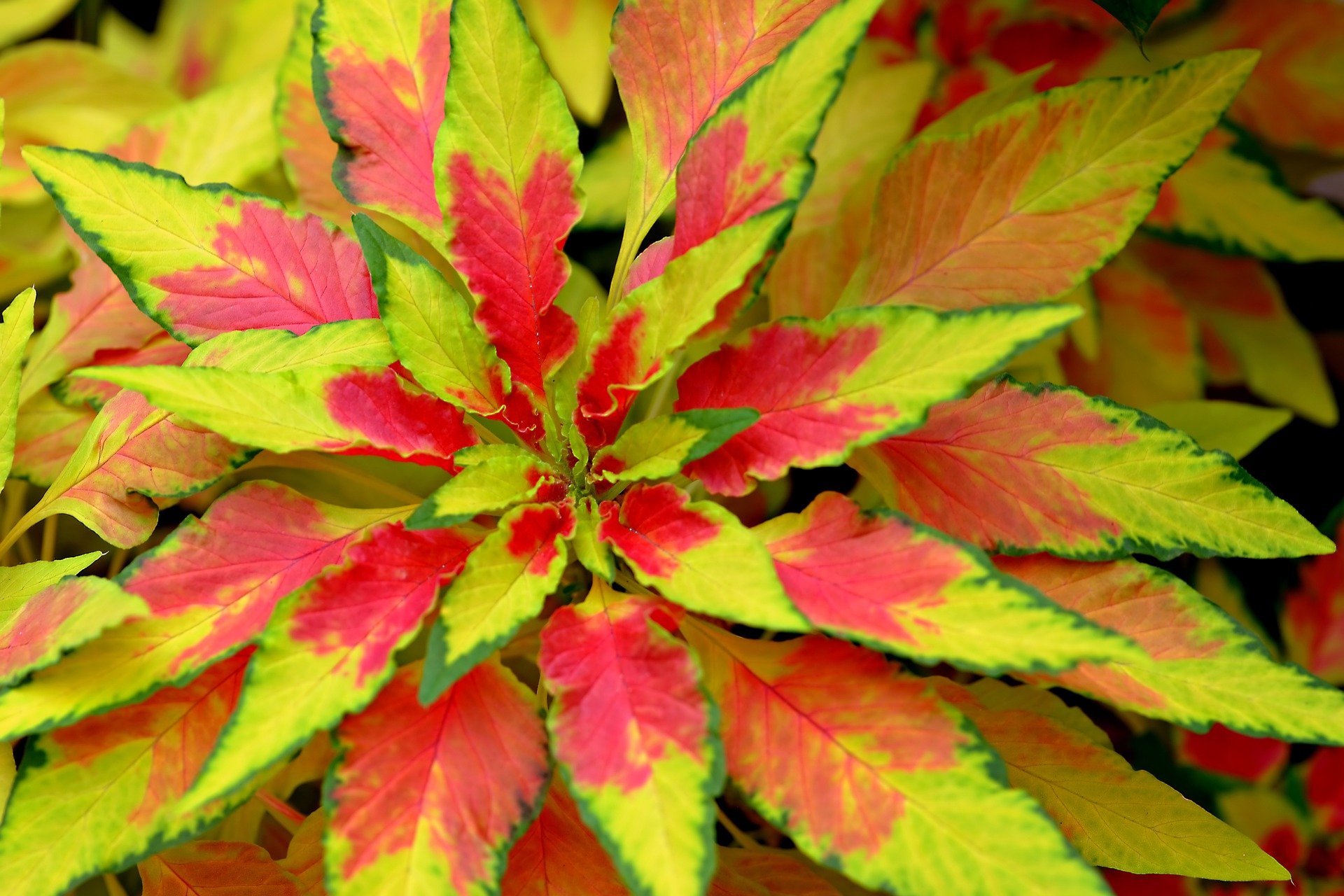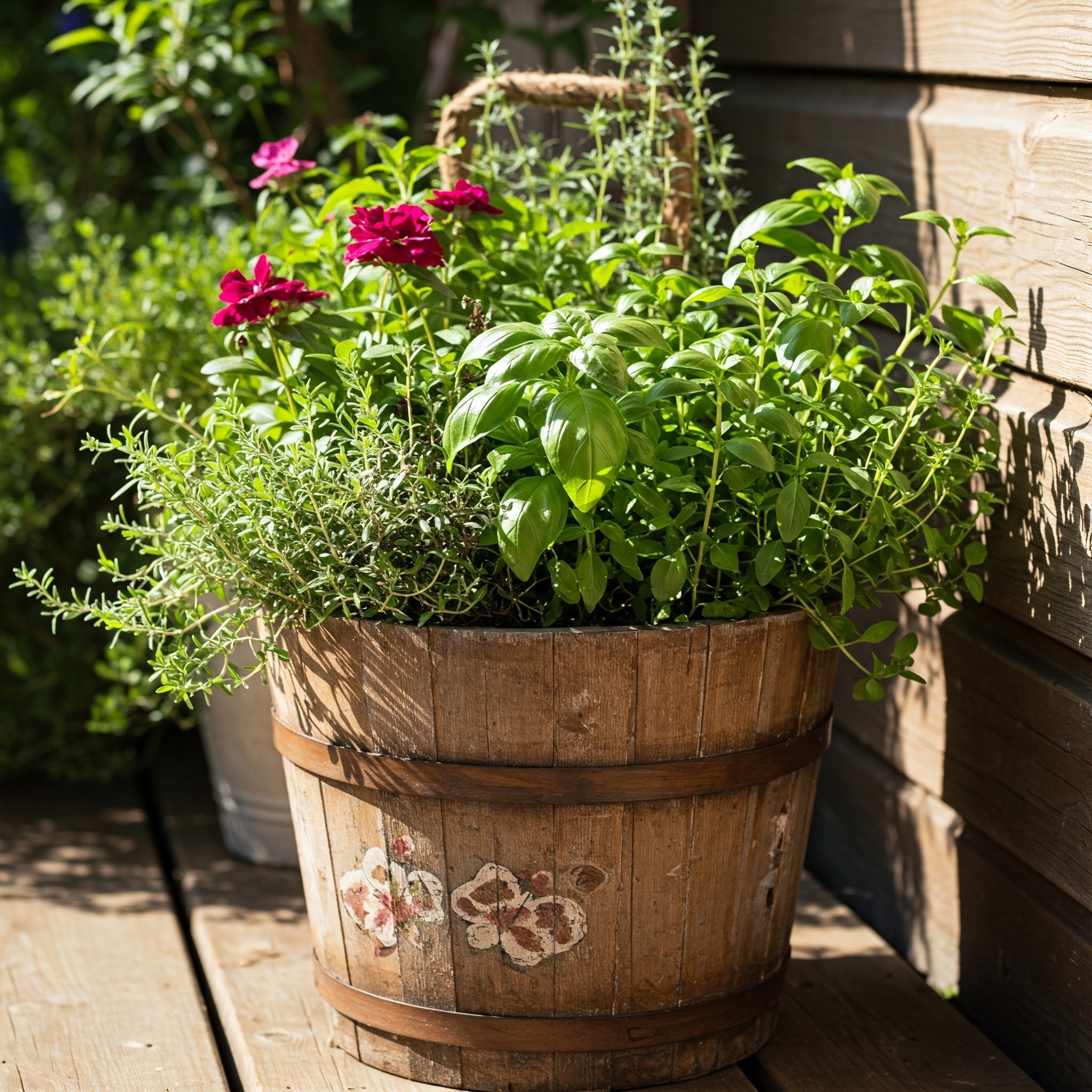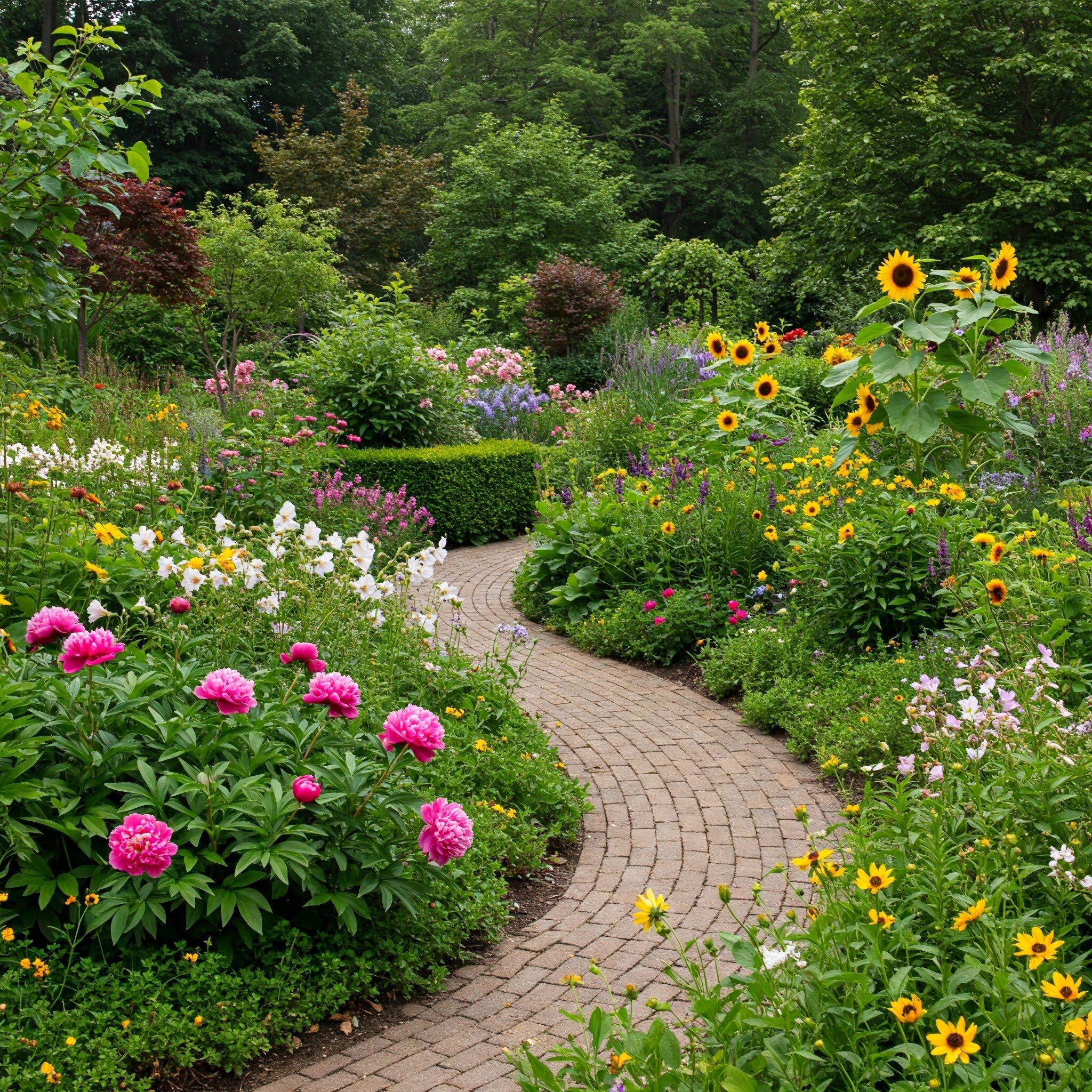How to Grow and Care for Joseph's Coat Plant
Discover everything you need to know about growing and caring for the stunning Joseph's Coat plant. Learn about its vibrant colors, ideal growing conditions, and maintenance tips to keep it thriving!
If you're on the hunt for a plant that brings a splash of color and vibrancy to your garden, look no further than the Joseph's Coat plant! Known for its stunning, multicolored foliage, this beauty is a favorite among gardeners and plant enthusiasts alike. Whether you’re looking to create a lively border, add some pizzazz to your landscape, or simply want a striking addition to your indoor plant collection, the Joseph's Coat plant delivers. In this guide, we’ll cover everything you need to know in our “How to Grow and Care for Joseph's Coat Plant” so you can keep this colorful gem thriving in your home or garden. Ready to get started? Let’s dive in!
How to Grow and Care for Joseph's Coat Plant: The Basics
Understanding the Joseph's Coat Plant
Joseph's Coat plant, scientifically known as Alternanthera ficoidea, is a tropical perennial that dazzles with its vibrant leaves. Its foliage can come in a range of colors, including shades of green, red, purple, and yellow. This plant isn’t just pretty; it’s also versatile, thriving in various settings—from garden beds to containers on your patio.
Ideal Growing Conditions
To help your Joseph's Coat plant flourish, it’s crucial to understand its ideal growing conditions:
Light Requirements: This plant loves bright, indirect sunlight. While it can tolerate some direct sunlight, too much can scorch its leaves. A location with filtered light is often ideal.
Soil Type: Joseph's Coat prefers well-draining soil rich in organic matter. A potting mix designed for tropical plants usually works well.
Temperature: Being a tropical plant, it thrives in warm temperatures between 65°F to 80°F (18°C to 27°C). Avoid exposing it to frost, as it can damage the plant.
How to Grow and Care for Joseph's Coat Plant: Step-by-Step Guide
Step 1: Choosing the Right Location
Whether you’re planting it in your garden or a container, selecting the right spot is crucial. Here’s what to look for:
Indoors: Place your Joseph's Coat near a window where it can receive bright, indirect light. If you notice the colors fading, it may not be getting enough light.
Outdoors: Choose a location that gets dappled sunlight throughout the day. If you’re in a hotter climate, some afternoon shade can help protect the leaves.
Joseph's Coat, known for its vibrant, multi-colored foliage, thrives in environments that provide the right balance of light. When positioning your plant indoors, select a spot near a window that allows for bright, indirect sunlight. This exposure is crucial; if the colors start to fade, it’s a sign that your plant may not be receiving enough light. For outdoor placement, look for an area that offers dappled sunlight throughout the day. This ensures your Joseph's Coat gets the brightness it needs without being scorched, especially in hotter climates. Providing some afternoon shade can be beneficial in protecting the leaves from excessive heat. With the right light conditions, your Joseph's Coat will flourish, showcasing its stunning array of colors.
Step 2: Planting Your Joseph's Coat
Ready to get planting? Follow these steps for successful planting:
Prepare the Soil: If you're planting in the ground, amend your soil with compost or well-rotted manure to enhance drainage and nutrient content.
Dig the Hole: Make a hole that’s slightly larger than the root ball of your plant. If you’re using a container, ensure it has drainage holes.
Planting: Gently remove the plant from its pot and loosen any tightly bound roots. Place the plant in the hole or container and backfill with soil. Water thoroughly after planting to help settle the soil.
First, prepare the soil by enriching it with compost or well-rotted manure, which improves drainage and boosts nutrient levels. Next, dig a hole that's slightly larger than the root ball of your plant to provide ample space for growth. If you’re using a container, make sure it has proper drainage holes to prevent waterlogging. When it’s time to plant, gently remove the plant from its pot, loosening any tightly bound roots to encourage healthy growth. Finally, place the plant in the hole or container, backfill with soil, and water thoroughly to help settle the soil around the roots. Follow these steps for a successful planting experience!
Step 3: Watering Your Joseph's Coat
Watering is crucial to maintaining a healthy Joseph's Coat plant:
Frequency: Keep the soil consistently moist but not soggy. Water your plant when the top inch of soil feels dry to the touch. In hotter months, you may need to water more frequently.
Signs of Underwatering: If the leaves start to droop or curl, it might be thirsty. On the other hand, yellowing leaves can indicate overwatering.
Maintaining the right moisture level is crucial for your plant’s health and vitality. To ensure optimal growth, keep the soil consistently moist but avoid sogginess. A good rule of thumb is to water your plant when the top inch of soil feels dry to the touch. During hotter months, you may find that your plant requires more frequent watering to stay hydrated. Watch for signs of underwatering, such as drooping or curling leaves, which indicate that your plant is thirsty and in need of water. Conversely, yellowing leaves can signal overwatering, so it's essential to strike a balance. By monitoring your plant's moisture needs closely, you can help it thrive and flourish in its environment.
Step 4: Fertilizing for Vibrant Growth
To keep your Joseph's Coat plant looking its best, regular feeding is essential:
Type of Fertilizer: Use a balanced, water-soluble fertilizer every four to six weeks during the growing season (spring and summer).
Application: Follow the package instructions for dilution rates and application methods. Be careful not to over-fertilize, as this can harm the plant.
Fertilizing your plant is essential for promoting healthy growth and vibrant foliage. To provide the necessary nutrients, use a balanced, water-soluble fertilizer every four to six weeks during the growing season, which typically spans spring and summer. This schedule ensures that your plant receives the nourishment it needs to thrive. When applying fertilizer, always follow the package instructions for proper dilution rates and application methods to avoid any potential harm. Over-fertilizing can lead to nutrient burn, which may damage your plant and hinder its growth. By carefully managing your fertilization routine, you can support your plant’s development and enhance its overall health, resulting in lush, colorful foliage that truly stands out.
Step 5: Pruning and Maintenance
Regular maintenance will help your Joseph's Coat plant thrive:
Pruning: To encourage bushier growth, pinch back the tips of the stems regularly. This will promote fuller foliage and enhance the plant’s vibrant colors.
Cleaning Leaves: Dust can accumulate on the leaves, so gently wipe them down with a damp cloth occasionally to keep them clean and allow the plant to photosynthesize efficiently.
Pruning and maintaining your plant are vital for promoting healthy growth and vibrant colors. Regularly pinching back the tips of the stems encourages bushier growth, resulting in fuller foliage and enhanced visual appeal. This simple practice not only helps shape the plant but also stimulates new growth, making it more robust. Additionally, keeping the leaves clean is essential for optimal photosynthesis. Dust can accumulate over time, hindering the plant's ability to absorb sunlight effectively. To maintain your plant’s health, gently wipe down the leaves with a damp cloth every so often. This routine care will ensure your plant thrives, showcasing its lush, colorful foliage and contributing to a more beautiful indoor or outdoor space.
Troubleshooting Common Issues
Even with the best care, you might encounter some challenges. Here are a few common issues and how to resolve them:
1. Leaf Discoloration
If you notice your leaves turning yellow or brown, it could be due to:
Overwatering: Make sure the soil drains well and isn’t waterlogged.
Underwatering: Check the soil moisture and water accordingly.
2. Pests and Diseases
Joseph's Coat plants can attract pests like aphids or spider mites. Keep an eye out for any unwanted visitors:
Aphids: These tiny pests suck the sap from the plant, causing yellowing leaves. You can rinse them off with water or use insecticidal soap.
Spider Mites: Look for tiny webs and tiny specks on leaves. Increase humidity and treat with neem oil to manage them.
3. Wilting Leaves
If your leaves are wilting, it could be a sign of stress:
Check the Soil: Ensure the soil is moist but not soggy. Adjust your watering schedule as needed.
Temperature Fluctuations: Protect your plant from extreme temperature changes or drafts.
Conclusion
And there you have it—your complete guide on “How to Grow and Care for Joseph's Coat Plant.” With its vibrant colors and lush foliage, this plant is sure to brighten up any space. By following the tips and guidelines outlined in this article, you’ll be well-equipped to keep your Joseph's Coat thriving and looking fabulous. So, roll up those sleeves, get your hands dirty, and enjoy the beauty of your flourishing plant! Happy gardening!
Frequently Asked Questions
1. Can Joseph's Coat be grown indoors?
Absolutely! Joseph's Coat can thrive indoors as long as it receives bright, indirect light and proper care.
2. How big does a Joseph's Coat plant get?
Typically, Joseph's Coat can grow up to 2-3 feet tall, but with regular pruning, you can keep it more compact.
3. Is Joseph's Coat plant toxic?
No, Joseph's Coat is not considered toxic to pets or humans, making it a safe choice for households.
4. Can I propagate my Joseph's Coat plant?
Yes! You can easily propagate Joseph's Coat through stem cuttings. Simply take a cutting, let it callous for a few hours, and then place it in water or soil to root.
5. What’s the best time to prune my Joseph's Coat?
Pruning can be done throughout the growing season to encourage bushy growth. Just be cautious not to prune too late in the fall, as this can affect its ability to thrive in winter.































